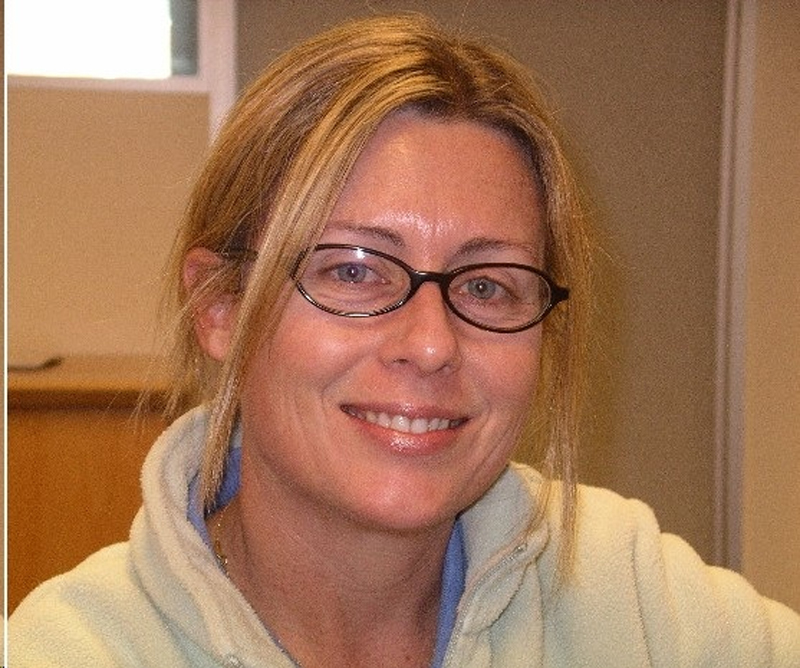
Biography
About me
Associate Professor Cecile King, Ph.D., joined the School of Biotechnology and Biomolecular Sciences at the University of New South Wales Sydney in 2021. CK received her Ph.D. in Immunology from UWA and completed her postdoctoral training at the Scripps Research Institute, La Jolla, USA. She joined the faculty of the Garvan Institute for Medical Research, Sydney, Australia in 2005. CK continues to be intrigued by how the immune system...view more
About me
Associate Professor Cecile King, Ph.D., joined the School of Biotechnology and Biomolecular Sciences at the University of New South Wales Sydney in 2021. CK received her Ph.D. in Immunology from UWA and completed her postdoctoral training at the Scripps Research Institute, La Jolla, USA. She joined the faculty of the Garvan Institute for Medical Research, Sydney, Australia in 2005. CK continues to be intrigued by how the immune system maintains tolerance to self and has made important contributions to our understanding of adaptive immune responses and autoimmunity. CK’s current research focus is RNA at the immune interface: Understanding both immune recognition of RNA and immune regulation by non-coding RNA and transposable elements.
My Research Activities
Research program
One of the most intriguing aspects of the immune system is its ability to react to foreign invaders, but not to self. To distinguish healthy cells (self) from infected cells or pathogens, the immune system utilizes multiple receptors and signalling pathways that enable specific recognition of proteins and nucleic acids. Recognition of foreign RNA occurs inside cells and depends upon unique features of pathogen RNA that allow our RNA sensors to see it as foreign. However, for some people, the immune system reacts inappropriately to self-RNA and this can trigger autoimmunity.
The achievement of self-tolerance is even more impressive when we consider that we are colonized by multiple microbial species that are important for our health, and our genomes harbour an abundance of retrovirally sourced nucleic acid acquired from past encounters with retroviruses, known as retrotransposons. In fact, only about 1% of our genome is made up of genes that make proteins; the other 99% is called non-coding. About half of that non-coding contribution contains DNA sequences known as retrotransposons that have copied and pasted themselves throughout our genomes over evolutionary time. Retrotransposons are information rich; containing sequences that regulate gene transcription, shape the 3D structure of our genetic material and are transcribed into RNA. Whilst a challenge for self-tolerance, the retention of retrotransposons in the genome has been shown to serve multiple regulatory functions that influence the transcription of protein coding genes. Our own work has shown that retrotransposons can function to regulate the immune response, favouring host survival during virus infection.
We are employing both an inside and outside approach to study RNA in the immune system-by studying how the immune system senses RNA during immune responses and how retroelement RNA’s regulate immune responses.
Project 1: The role of retrotransposons in regulation of immune responses. This project will take a genome-wide approach to analyse the role of retrotransposons in the regulation of the immune system.
Project 2: RNA sensing in health and disease. This project will probe the underlying mechanisms of RNA sensing by the immune system and how autoimmune disease associated mutations in RNA recognition pathways influence immune responses.
Contact Cecile about research supervision opportunities: c.king@unsw.edu.au
Selected publications
- Nenad Bartonicek, Romain Rouet, Joanna Warren, Claudia Loetsch, Gabriela Santos Rodriguez, Stacey Walters, Francis Lin, David Zahra, James Blackburn, Jillian M. Hammond, Andre L. M. Reis, Ira W. Deveson, Nathan Zammit, Mahdi Zeraati, Shane Grey, Daniel Christ, John S. Mattick, Tatyana Chtanova, Robert Brink, Marcel E. Dinger, Robert J Weatheritt, Jonathan Sprent and Cecile King (2022). The retroelement Lx9 puts a brake on the immune response to virus infection. Nature 608(7924):757-765. https://doi.org/10.1038/s41586-022-05054-9.
- Cecile King and Jonathan Sprent (2021). The dual nature of type-I interferons in SARS-CoV-2 induced inflammation. Trends in Immunology 42(4):312-322 01 Apr 2021. doi:10.1016/ j.it.2021.02.003.
- Loetsch C, Warren J, Laskowski A, Vazquez-Lombardi R, Jandl C, Langley DB, Christ D, Thorburn DR, Ryugo DK, Sprent J, Batten M, King C (2017) Cytosolic Recognition of RNA Drives the Immune Response to Heterologous Erythrocytes. Cell Reports 21 (6):1624-1638. doi:10.1016/j.celrep.2017.10.044
- Jandl C, Liu SM, Cañete PF, Warren J, Hughes WE, Vogelzang A, Webster K, Craig ME, Uzel G, Dent A, Stepensky P, Keller B, Warnatz K, Sprent J, King C (2017) IL-21 restricts T follicular regulatory T cell proliferation through Bcl-6 mediated inhibition of responsiveness to IL-2. Nature Communications 8. doi:10.1038/ncomms14647.
- McGuire HM, Vogelzang A, Ma CS, Hughes WE, Silveira PA, Tangye SG, Christ D, Fulcher D, Falcone M, King C (2011) A Subset of Interleukin-21(+) Chemokine Receptor CCR9(+) T Helper Cells Target Accessory Organs of the Digestive System in Autoimmunity. Immunity 34 (4):602-615. doi:10.1016/j.immuni.2011.01.021.
- King C (2011) A Fine Romance: T Follicular Helper Cells and B Cells. Immunity 34 (6):827-829. doi:10.1016/j.immuni.2011.06.007.
- McGuire HM, Vogelzang A, Hill N, Flodstrom-Tullberg M, Sprent J, King C (2009) Loss of parity between IL-2 and IL-21 in the NOD Idd3 locus. Proceedings of the National Academy of Sciences of the United States of America 106 (46):19438-19443.
- King C (2009) New insights into the differentiation and function of T follicular helper cells. Nature Reviews Immunology 9 (11):757-766.
- Vogelzang A, McGuire HM, Yu D, Sprent J, Mackay CR, King C (2008) A fundamental role for interleukin-21 in the generation of T follicular helper cells. Immunity 29 (1):127-137. doi:10.1016/j.immuni.2008.06.001.
- King C, Ilic A, Koelsch K, Sarvetnick N (2004) Homeostatic expansion of T cells during immune insufficiency generates autoimmunity. Cell 117 (2):265-277. doi:10.1016/ s0092-8674(04)00335-6.